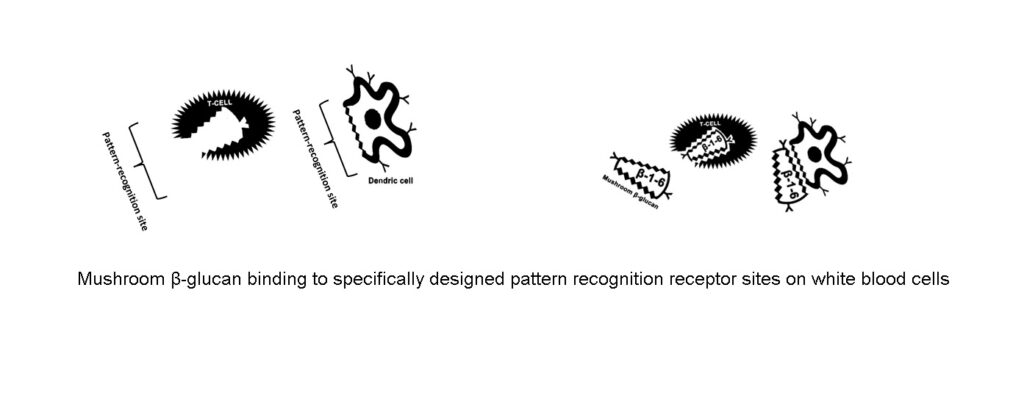Mushroom beta-glucans are long-chains of saccharides (sugars) and therefore fall under the umbrella term polysaccharides, meaning “many sugars”.
Polysaccharides are found throughout nature and beta-glucans are not exclusive to mushrooms but also found within cereal crops such as wheat and oats.
However, the structure of beta-glucans derived from mushrooms differ from those of plants and this structure distinction is believed to be a key factor in the unique health implications.
Other polysaccharides such as starch or carbohydrates are held together at their alpha links which render them easily dismantled by digestive enzymes into their smaller constituent parts, such as amylose, glucose and fructose for example.
However, beta-glucans, as the name suggests, are connected via beta links which makes them indigestible.
In addition, whereas plant-based beta-glucans are linked between glycosidic bonds 1 and 4, mushroom beta-glucans are linked between 1 and 3 or 1 and 6.
This configuration of mushroom beta-glucans forms a triple-helix structure which is believed to be a significant factor in their ability to trigger a positive immune response.
In comparison to plant-based glucans the beta-1-3 and beta-1-6 arrangment of those found within mushrooms makes these polysaccharides molecularly large, which, coupled with the fact that they are also indigestible and fungal in origin cause them to be misidentified as a potential pathogen by the human immune system.
The structural characteristics of mushroom beta-glucans trigger an appropriate upregulation of the innate immune system, thus, boosting immune protection.

Moreover, certain immune cells such as m-cells at the site of peyers patches in the stomach, dendric cells, dectins, and collectins have surface receptor sites that are specifically designed to recognise the structure of mushroom beta-glucans.
Therefore, certain white blood cells of the innate immune system have pattern-recognition receptor sites dedicated to recognising the size and shape of mushroom polysaccharides.
These pattern-recognition receptor sites bind to the mushroom beta-glucan causing a cascading immune response, boosting the immune system to fight bugs and other pathogens as well as making sure cells that are not functioning properly are destroyed.
Most mushrooms will contain beta-glucans but Reishi, Maitake, Shittake, Turkey Tail and Chaga are known to be particularly packed.
-
 Reishi Mushroom Capsules£14.49
Reishi Mushroom Capsules£14.49 -
 Chaga Powder 60g£19.97
Chaga Powder 60g£19.97

